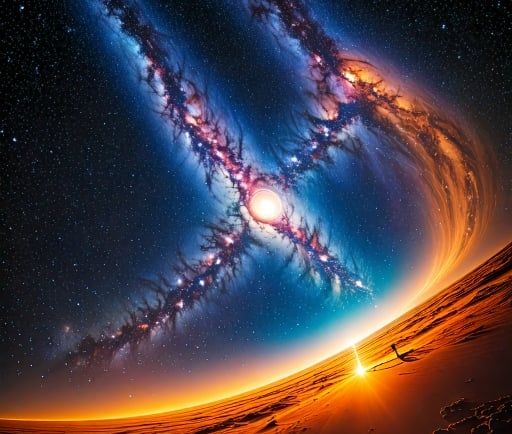Gravitational Lensing: The Warping of Space and Time


What is Gravitational Lensing?
Gravitational lensing is a fascinating phenomenon in the realm of astrophysics, occurring when a massive object, such as a galaxy cluster, warps the fabric of space and time around it. This distortion causes the path of light to bend, allowing astronomers to view distant galaxies that would otherwise remain hidden from our sight. The study of gravitational lensing provides profound insights into the universe's structure and the mysterious nature of dark matter.
The Mechanics of Light Bending
To comprehend how gravitational lensing operates, one must first understand the principles of general relativity as proposed by Albert Einstein. According to these principles, massive objects create a curvature in space-time, influencing the trajectory of light traveling near them. When light from a distant galaxy passes close to a massive object, like a galaxy cluster, it follows a curved path, causing the image of the distant galaxy to appear stretched and distorted. This bending of light can significantly enhance the brightness of the distant galaxies, making them detectable with our advanced telescopes.
Types of Gravitational Lensing
Gravitational lensing can be broadly classified into three categories: strong lensing, weak lensing, and microlensing. Strong lensing occurs when the alignment between the observer, the lensing object, and the background galaxy is nearly perfect, resulting in multiple distortions and significantly magnified images. Weak lensing, on the other hand, involves slight distortions of background objects, which can be observed statistically across large swathes of the sky. Lastly, microlensing describes a situation where small masses, like individual stars or planets, cause temporary magnification of background light sources, though they may go undetected if not studied meticulously.
The implications of gravitational lensing extend beyond mere observation. It serves as a vital tool in mapping dark matter, as the amount of bending indicates the mass of the lensing object. Furthermore, by analyzing the light distribution, astronomers can glean information about the structure and dynamics of the universe at large distances.
Conclusion
Gravitational lensing remains one of the most intriguing topics in modern astrophysics, allowing scientists to probe the unseen universe. Through this natural cosmic phenomenon, we gain the ability to view distant galaxies, providing essential clues to the composition and evolution of the universe. Its study not only aids in understanding fundamental physics but also deepens our appreciation of the grandeur and complexity of the cosmos.
